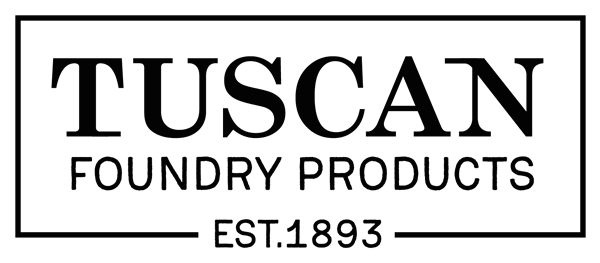

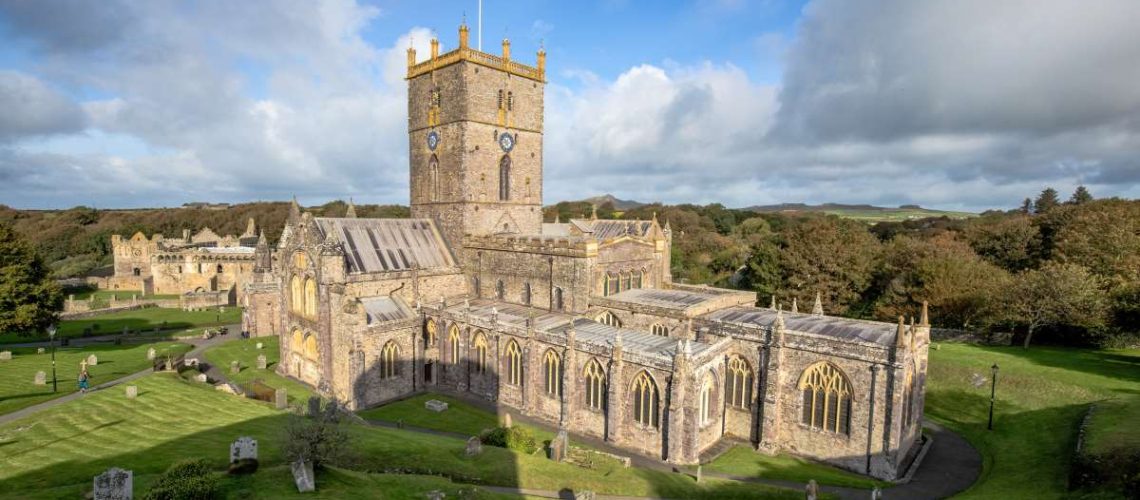
With its rich history and dramatic landscapes, Pembrokeshire boasts a remarkable array of historic buildings that reflect its architectural heritage. The region’s built environment tells the story of centuries past, from medieval castles and grand Georgian houses to charming stone cottages. These buildings are more than just landmarks; they are integral to the area’s cultural identity, attracting visitors and preserving local craftsmanship traditions.
Conserving listed and historic structures is crucial for protecting their aesthetic and historical value and safeguarding their contribution to the community’s sense of place. By adhering to conservation principles and using traditional materials, such as cast iron for guttering and pipes, we can ensure these buildings remain standing for future generations while maintaining their unique character and authenticity. Preservation is critical to honouring Pembrokeshire’s past and securing its future.
Building conservation is about balancing the preservation of historical integrity with the functional needs of the present. This involves adhering to strict guidelines for listed properties that safeguard their architectural and historical significance. The fundamental principles of building conservation include minimal intervention, maintaining original features, and ensuring any repairs or restorations are reversible wherever possible. These approaches ensure that future generations can continue to experience the building in its authentic form.
One of the most important aspects of conservation is using traditional materials that are in keeping with the original construction. In historic buildings, authenticity is closely tied to craftsmanship and materials such as natural stone, lime mortar, and cast iron.
Using cast iron guttering and pipes, for example, respects the building’s original design and enhances its longevity. Cast iron is durable, sustainable, and aesthetically harmonious with period architecture, ensuring that repairs blend seamlessly with the existing structure.
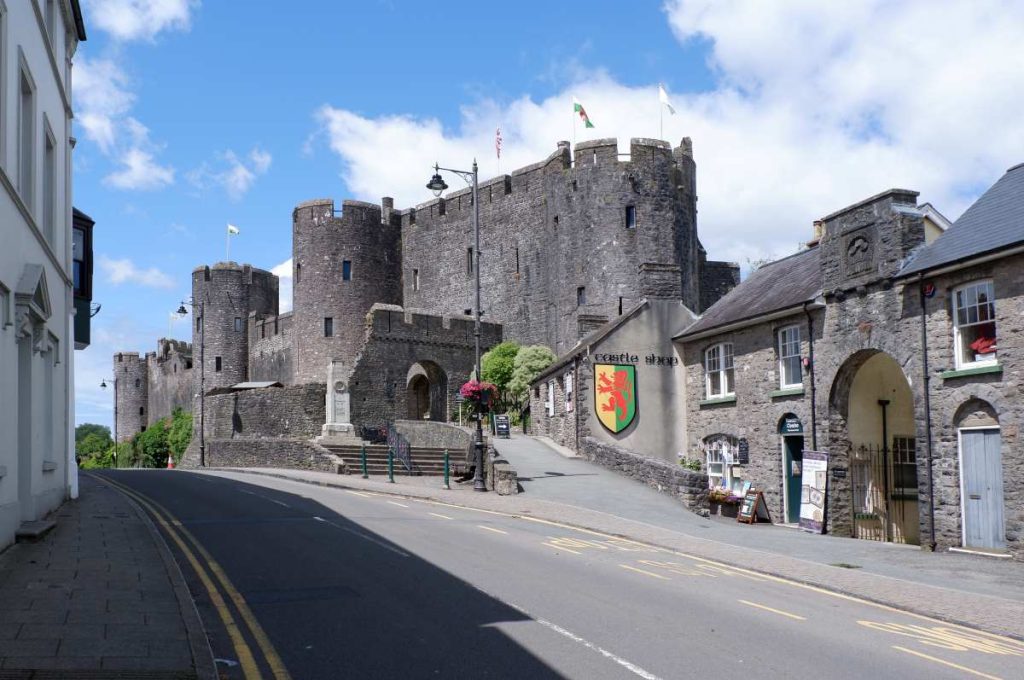
By honouring these principles and selecting appropriate materials, conservation efforts preserve the charm and character of listed buildings while planning for their future use and survival. This delicate balance is at the heart of successful building conservation.
Cast iron is a time-honoured material that has long been the preferred choice for guttering and pipes in historic buildings. Its durability, sustainability, and aesthetic appeal suit it for conservation work.
One of the key benefits of using cast iron is its exceptional longevity. Adequately maintained, cast iron guttering can last for over a century, making it a practical solution for heritage properties where replacing original features too frequently would undermine their authenticity. Additionally, cast iron is incredibly robust and capable of withstanding the harshest weather conditions without warping or deteriorating, which is essential for maintaining the integrity of historic structures.
From a sustainability perspective, cast iron is 100% recyclable, fitting seamlessly into eco-friendly restoration practices. Moreover, its heavy-duty nature reduces the need for frequent repairs or replacements, contributing to the conservation of resources.
Aesthetically, cast iron guttering complements the character of historic buildings, offering a timeless, period-appropriate appearance that modern alternatives often fail to replicate. It can be shaped and detailed to match original architectural features, ensuring that any updates or repairs respect the building’s original charm. For heritage buildings, cast iron remains a choice that balances tradition with performance.
In Pembrokeshire, where heritage preservation is paramount, cast iron guttering plays a vital role in maintaining the historical character of the county’s listed buildings. Iconic sites such as Pembroke Castle and St. Davids Cathedral showcase how traditional materials like cast iron complement the architectural fabric of these landmarks. At these properties, cast iron guttering serves a functional purpose and contributes to the structures’ aesthetic integrity, blending seamlessly with their original designs.
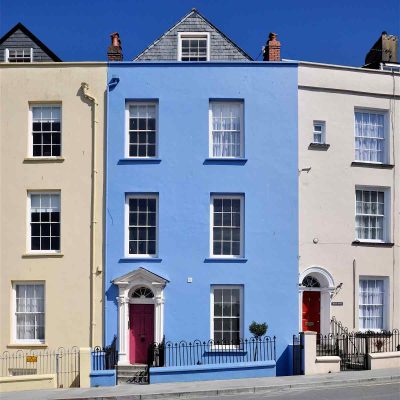
Using cast iron in listed buildings ensures compliance with heritage regulations, often mandating authentic, period-appropriate materials. These guidelines are in place to preserve the historical value and appearance of protected buildings. Cast iron, with its durability and heritage appeal, meets these criteria and is frequently specified in conservation projects.
In properties such as the grand Georgian houses of Tenby or the traditional stone cottages in Narberth, replacing or installing cast iron guttering respects the original craftsmanship while enhancing the building’s longevity.
By adhering to conservation standards and using materials like cast iron, Pembrokeshire’s architectural gems can be preserved for future generations, maintaining their unique charm and historical significance.
Installing cast iron guttering on listed buildings requires careful attention to both practical considerations and heritage regulations to preserve the structure’s authenticity. Following best practices during installation and ongoing maintenance is essential for maintaining the character and functionality of the building.
Best Practices for Installation:
– Survey the Existing Structure: Before installation, assess the current guttering system and building structure to determine the appropriate size and type of cast iron components. Replicating original designs is often necessary to comply with heritage regulations.
– Use Compatible Fixings and Brackets: Ensure that the fixings and brackets are compatible with the building’s construction materials (such as stone or brick) and maintain a traditional appearance.
– Correct Positioning: Guttering should be installed at a slight slope to allow efficient water drainage while remaining inconspicuous and in line with the building’s architectural design.
– Seal Joints Properly: Use lead-based or heritage-approved sealants to prevent leaks while keeping the guttering system historically accurate.
Maintenance Tips for Longevity:
– Regular Inspections: Schedule annual checks to remove debris, such as leaves, that can cause blockages and corrosion.
– Clean and Repaint: Every 5–10 years, clean the guttering and apply a fresh coat of specialist paint to protect against rust, ensuring the finish is in keeping with the building’s period.
– Check for Cracks and Rust: Look for early signs of damage and address them promptly to avoid more significant issues later.
– Avoid Harsh Cleaners: Use mild cleaning agents to avoid damaging the cast iron’s protective coating, preserving the material’s integrity and historical accuracy.
Following these installation and maintenance practices, cast iron guttering will continue to protect and enhance listed buildings without compromising their heritage value.
Cast iron is significant in eco-friendly building conservation, offering environmental and heritage advantages. As a highly durable material, it requires minimal replacements over time, reducing waste and the demand for new raw materials. Its long lifespan—often exceeding 100 years with proper maintenance—makes cast iron ideal for sustainable restoration projects. When repairs are necessary, cast iron can be recycled and reused without compromising quality, contributing to a circular economy.
In heritage building conservation, restoring rather than replacing original materials is a crucial sustainability principle. By repairing cast iron guttering or pipes, we preserve the historical integrity of the building while avoiding the environmental impact of producing modern substitutes. Restoration minimises waste and reduces energy consumption associated with manufacturing new components.
Additionally, using traditional materials like cast iron ensures that conservation work respects the architectural integrity of historic buildings, enhancing their longevity. This commitment to preservation aligns with sustainable practices, as it reduces the frequency of replacements and contributes to the property’s long-term value. In this way, cast iron guttering offers practical durability and an environmentally responsible choice for maintaining listed and historic buildings.
Cast iron guttering plays a pivotal role in preserving the historic buildings of Pembrokeshire, offering both durability and a timeless aesthetic that aligns with the county’s architectural heritage. Using cast iron, we respect the authenticity of listed and historic properties while ensuring they remain structurally sound and protected from weathering. Its ability to blend seamlessly with period architecture makes it an essential material for conservation projects.
Balancing tradition with modern needs is crucial in building conservation. While heritage regulations demand adherence to authentic materials and methods, modern advancements in manufacturing and maintenance allow us to optimise these traditional components for even greater longevity and efficiency.
Cast iron exemplifies this balance, offering a historically appropriate and sustainable material for future generations.
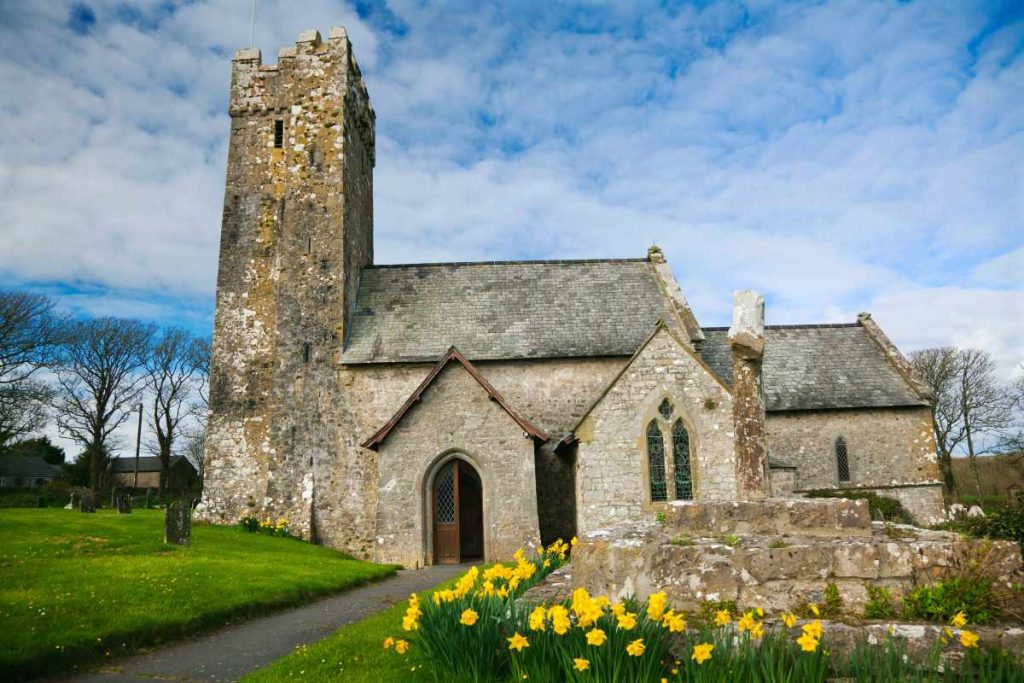
Preserving Pembrokeshire’s architectural legacy depends on thoughtful, respectful restoration practices. By embracing traditional materials like cast iron and following best conservation practices, we can protect these historic treasures while meeting contemporary environmental and structural standards. This balance ensures that Pembrokeshire’s heritage remains intact for future generations to appreciate and enjoy.

Tuscan Foundry has been at the forefront of supplying high-quality cast iron guttering and pipes for historic buildings and listed properties in Pembrokeshire. With a deep understanding of the unique requirements of building conservation, we are committed to providing traditional materials that respect the architectural integrity of these structures. Our cast iron gutters and pipes are designed to seamlessly blend with period features, ensuring that heritage buildings maintain their original charm while benefiting from durable, long-lasting solutions.
To support restoration projects, we offer a comprehensive site survey service explicitly tailored to the needs of listed buildings and conservation areas. This service helps select the correct sizes, styles, and installation methods, fully complying with listed building consent and regulations. By working closely with conservation professionals, architects, and property owners, Tuscan Foundry helps protect and preserve Pembrokeshire’s rich architectural heritage.
Our cast iron guttering and pipes are authentic, eco-friendly, and built to last for generations. Whether for a historic property in Pembrokeshire or a listed building elsewhere, Tuscan Foundry delivers the highest standards in product quality and conservation expertise.
Cast iron guttering is the preferred choice for listed buildings because it aligns with conservation requirements and maintains architectural authenticity. Its durability and classic aesthetic allow it to blend seamlessly with period properties such as Pembrokeshire’s Georgian houses or traditional stone cottages. Cast iron is also 100% recyclable and highly resilient to harsh coastal weather, making it both a sustainable and historically appropriate solution.
Yes. Any changes that affect the character of a listed building—including guttering and downpipes—require Listed Building Consent (LBC). Even replacing existing cast iron systems with the same material and profile should be approved by your local authority. Tuscan Foundry supports heritage projects with guidance and documentation to ensure compliance with all planning regulations.
With proper maintenance, cast iron guttering can last over 100 years. Its strength and longevity make it ideal for historic properties, especially in areas like Pembrokeshire where buildings face exposure to wind and rain. Tuscan Foundry offers paint finishes such as linseed oil for added protection, which not only preserve the aesthetic but also significantly extend the life of the material.
Routine maintenance includes annual inspections to remove debris and check for rust, cracks, or loose fittings. Repainting with heritage-appropriate coatings such as linseed oil every 5–10 years ensures longevity. Tuscan Foundry recommends using traditional methods and sealants to preserve both function and authenticity.
Yes. Cast iron systems, particularly deeper profiles like Deep Half Round and Victorian Ogee, are highly effective at managing greater volumes of rainwater. Tuscan Foundry provides guidance on calculating flow rates and selecting gutter profiles that match both the architectural style and the drainage capacity required for changing weather patterns.
Absolutely. Tuscan Foundry specialises in bespoke cast iron guttering and downpipes, with over 19 traditional profiles available. If a unique pattern is needed, they can create custom moulds to replicate existing architectural features, ensuring that repairs or replacements respect the building’s heritage.
Cast iron is not only durable and repairable but also fully recyclable, making it an eco-friendly choice for conservation projects. By using and restoring traditional materials like cast iron, building owners in Pembrokeshire contribute to a circular economy while preserving their property’s historical integrity. Tuscan Foundry supports this with environmentally responsible finishes and manufacturing processes.